This article has multiple issues. Please help improve it or discuss these issues on the talk page . (Learn how and when to remove these template messages)
|
The Egyptian Cavalry Corps was the mounted corps of the Egyptian Army.
This article has multiple issues. Please help improve it or discuss these issues on the talk page . (Learn how and when to remove these template messages)
|
The Egyptian Cavalry Corps was the mounted corps of the Egyptian Army.
Muhammad Ali of Egypt and the Sudan created a strong standing army with modern weaponry, tactics and training. Some historians argue that Ali was fond of the Napoleonic method of military management, and the additions and new establishments to the Egyptian military were inspired by the French military itself. [1] As Ali's army returned from the Greek War of Independence, his son and the commander of the army, Ibrahim Pasha, suggested the creation of an Egyptian Cavalry Corps. The corps was established in 1828 and a school was founded in Giza to train cavalry officers. In 1839, the Cavalry Corps had 15 regiments (8 of which are cuirassiers) scattered all over Egypt.
In his book, Antoine Clot Bey mentioned [ which? ] that the formation of the cavalry units in the Egyptian army were not formed according to the new system until after the army's return from the Greek War of Independence because during this war, Ibrahim Pasha had witnessed the cavalry system of France and realised the importance of cavalry organisation. After his return to Egypt, he began to form cavalry units based on the European system, and several European teachers were hired for this purpose.
The Military Academy of Cavalry was established in Giza at Mourad Bey Palace, which was turned into a cavalry barracks. The school was organised by Monsieur Varane, who was from the officers of the Napoleonic Empire including Yawar, Marshal Gouvion and his subordinate in-training officers, who were learning about cavalry manoeuvres and infantry movements.
The school used to follow the system of the Somme Military School in France, except for some minor modifications that were required by the local conditions.[ clarification needed ] Young Egyptians and Turks graduated as officers of the Cavalry Corps.
Marshal Marmon visited this school in 1834, and there were 360 trainees in it, and he admired it and wrote about it on his journey:
"When I saw these students in the field carrying out manoeuvres, I imagined that I was in front of a line of the finest verses in our horses. While the school was lacking to reach a degree of perfection, some lessons in language, drawing, and so forth, but there is no dispute that it is from the side of organising the cavalry teams, it lacks nothing, The students are good at riding horses, the manoeuvres they perform take place with lightness, accuracy and wisdom, their system and their best regret, and their morale is fine, they are soldiers with all the meanings of the word, and the trumpet bearers perform their work with perfection. "
After the Anglo-Egyptian war, the Egyptian Military High Command was controlled by British generals and was downsized until it became a homeland defence. The Cavalry Corps was split into battalions instead of regiments. Its main engagement after the war was the long-running Mahdist War.
A few years after the war, Egypt ended the British Protectorate and a Kingdom under the rule of Fuad I was established. Fuad's administration began to modernise everything in the country including the economy, military, education, etc. The military modernisation was focused on mechanisation, building new military schools and mobilising more men and re-establishing units. In 1928, the corps' name was changed to Royal Egyptian Cavalry Corps. The mechanisation process went totally on the Egyptian Cavalry Corps where many of its units (except the Royal Guards) replaced its traditional horse formations with Armoured Vehicles and Tanks. By the early 1940s, nearly all of the corps was mechanised except for some battalions that served as gendarmerie and used horses.

Australian Light Horse were mounted troops with characteristics of both cavalry and mounted infantry, who served in the Second Boer War and World War I. During the inter-war years, a number of regiments were raised as part of Australia's part-time military force. These units were gradually mechanised either before or during World War II, although only a small number undertook operational service during the war. A number of Australian light horse units are still in existence today.
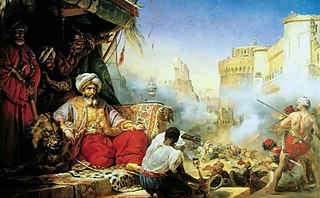
Muhammad Ali rose to power in Egypt came following a long, three-way civil war between the Ottoman Empire, Egyptian Mamluks who had ruled Egypt for centuries, and Albanian mercenaries in the service of the Ottomans. The conflict ended in victory for the Albanians led by Ali.
The history of Egypt under the Muhammad Ali dynasty (1805–1953) spanned the later period of Ottoman Egypt, the Khedivate of Egypt under British occupation, and the nominally independent Sultanate of Egypt and Kingdom of Egypt, ending with the Revolution of 1952 and the formation of the Republic of Egypt.
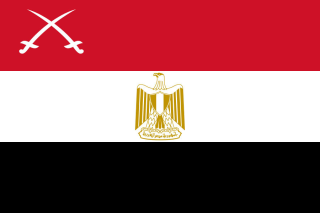
The Egyptian Army or Egyptian Ground Forces is the land warfare branch of the Egyptian Armed Forces. It is the largest service branch of the Egyptian Armed Forces.

Ottoman Egypt was an administrative division of the Ottoman Empire after the conquest of Mamluk Egypt by the Ottomans in 1517. The Ottomans administered Egypt as a province (eyalet) of their empire. It remained formally an Ottoman province until 1914, though in practice it became increasingly autonomous during the 19th century and was under de facto British control from 1882.
The battle of Konya was fought on December 21, 1832, between Egypt and the Ottoman Empire, just outside the city of Konya in modern-day Turkey. The Egyptians were led by Ibrahim Pasha, while the Ottomans were led by Reşid Mehmed Pasha. The Egyptians were victorious.
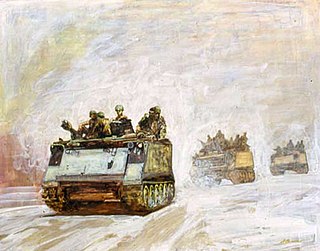
Armoured cavalry are military units using armoured fighting vehicles (AFVs) instead of horses. They began to replace horse cavalry in the heavy shock and the light reconnaissance, skirmishing and exploitation/pursuit roles in most armies commencing after the First World War. In that succeeding capacity, the obsolete name "cavalry" was retained.
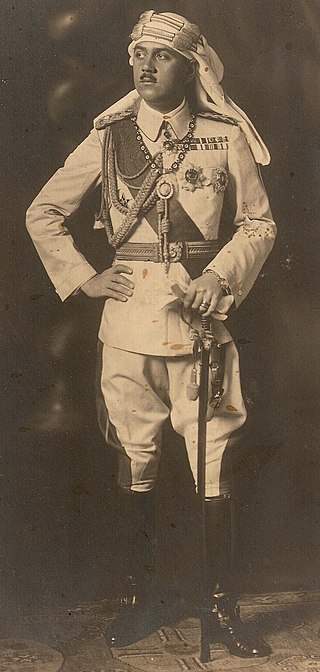
Şehzade Osman Fuad Efendi was an Ottoman prince, the son of Şehzade Mehmed Selaheddin, and the grandson of Sultan Murad V, who reigned briefly in 1876. He was the 39th head of the Imperial House of Osman from 1954 to 1973.
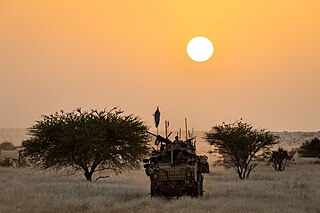
There are 13 cavalry Regiments of the British Army each with its own unique cap badge, regimental traditions, and history. Of the currently nine regular cavalry regiments, two serve as armoured regiments, three as armoured cavalry regiments, three as light cavalry, and one as a mounted ceremonial regiment. There are also four yeomanry regiments of the Army Reserve, of these, three serve as light cavalry and one as an armoured regiment. Each yeomanry light cavalry unit has been paired with a regular unit of the same role, the armoured yeomanry unit is paired with the two regular armoured units. All except the Household Cavalry are part of the British Army's Royal Armoured Corps.

The Muhammad Ali dynasty or the Alawiyya dynasty was the ruling dynasty of Egypt and Sudan from the 19th to the mid-20th century. It is named after its progenitor, Muhammad Ali of Egypt, regarded as the founder of modern Egypt.
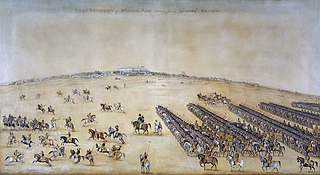
The 1st Horse (Skinner's Horse) is a regiment of the Armoured Corps of the Indian Army. It traces its origins as a cavalry regiment from the times of the East India Company, followed by its service in the British Indian Army and finally, after independence as the fourth oldest and one of the senior cavalry regiments of the Armoured Corps of the Indian Army.

The Khedivate of Egypt was an autonomous tributary state of the Ottoman Empire, established and ruled by the Muhammad Ali Dynasty following the defeat and expulsion of Napoleon Bonaparte's forces which brought an end to the short-lived French occupation of Lower Egypt. The Khedivate of Egypt had also expanded to control present-day Sudan, South Sudan, Eritrea, Djibouti, northwestern Somalia, northeastern Ethiopia, Lebanon, Jordan, Syria, Greece, Cyprus, southern and central Turkey, in addition to parts from Libya, Chad, Central African Republic, Democratic Republic of Congo, and Uganda, as well as northwestern Saudi Arabia, parts of Yemen and the Kingdom of Hejaz.

The Second Egyptian–Ottoman War lasted from 1839 until 1841 and was fought mainly in Syria. It has sometimes been referred to as the Syrian War or Second Syrian War.

Abbas Helmy I of Egypt was the Wāli of Egypt and Sudan. He was a son of Tusun Pasha, the younger son of Muhammad Ali Pasha whom he succeeded as ruler of Egypt and Sudan. The Chambers Biographical Dictionary says of him: "[b]igoted and sensual, he did much to undo the progress made under Muhammad Ali."

This is the order of battle for the Battle of Megiddo (1918), the concluding engagement of the Sinai and Palestine Campaign of the First World War. The Entente's Egyptian Expeditionary Force, commanded by General Edmund Allenby and composed mainly of British, Indian, Australian and New Zealand troops, with a small French and Armenian contingent, cooperated with the Arab Northern Army, which was part of the Arab Revolt and was under the overall command of the Emir Feisal, in an all-out offensive against the Yıldırım Army Group, part of the army of the Ottoman Empire.

Muhammad Ali was the Ottoman Albanian governor and de facto ruler of Egypt from 1805 to 1848, considered the founder of modern Egypt. At the height of his rule, he controlled Egypt, Sudan, Hejaz, Najd, the Levant, Crete and parts of Greece.
The Albanian community in Egypt began with government officials and military personnel appointed in Ottoman Egypt. A substantial community would grow up later by soldiers and mercenaries who settled in the second half of the 18th century and made a name for themselves in the Ottoman struggle to expel French troops in 1798–1801. Mehmet Ali or Muhammad Ali, an Albanian, would later found the Khedivate of Egypt which lasted there until 1952. In the 19th and early 20th centuries, many other Albanians settled into Egypt for economical and political reasons. However, in later years the activities of the fedayeen, Muslim Brotherhood, as well as the greater Egyptian Revolution of 1952 resulted in the Albanian community in Egypt largely abandoning the country and emigrating to Western countries. It is got estimated that recently were 18,000 Albanians in Egypt, but in the past were most numerous that today.
The Egyptian Armoured Corps is a branch of the Egyptian Army and the second main Corps responsible for Armoured operations. It was established after the Egyptian Cavalry Corps was converted to use vehicles, after 1930.
The Egyptian Artillery Corps is one of the oldest branches of the Egyptian Army, formed in the early 19th century. Its most notable action was during Operation Badr in the Yom Kippur War. The Artillery Corps is responsible for unit support and more general, echelons-above-division fire support.
Future Soldier is a reform of the British Army resulting from the Integrated Review of Security, Defence, Development and Foreign Policy published in March 2021. The aim of the reform is to create a more lethal, agile and expeditionary force, able to fight and win wars and to operate in the grey-zone between peace and war. Future Soldier was published on 25 November 2021 and deals with the organizational changes of the British Army, with changes to personnel and equipment were set out in the Defence in a Competitive Age paper published on 22 March 2021.